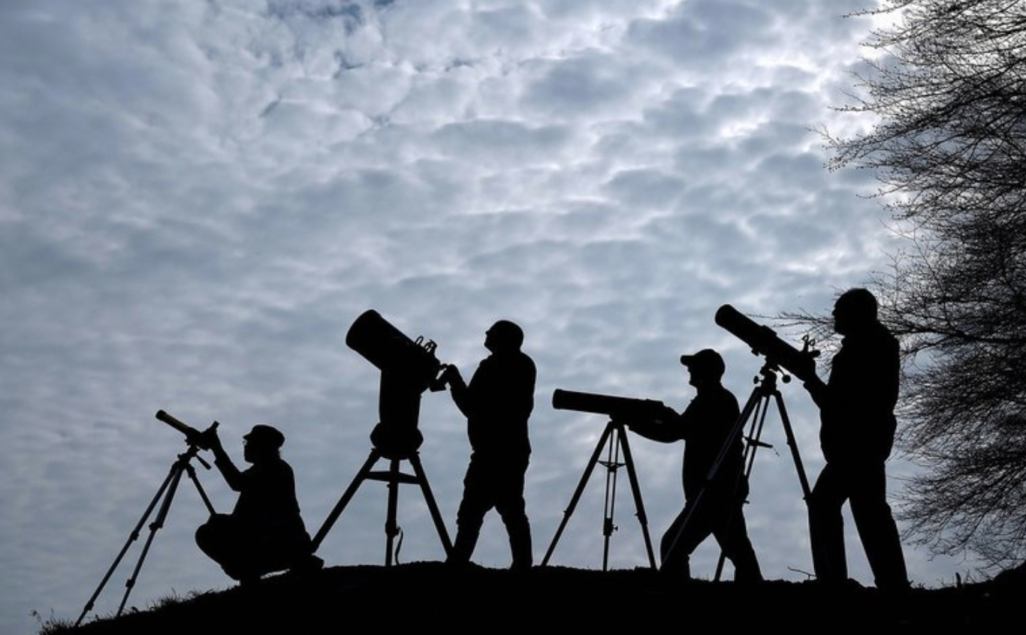Q: What is a total solar eclipse anyway?
A: Most people are familiar with the idea that the moon orbits around the earth, and that takes roughly 27 days. Once a month, the moon is between the Earth and the sun, but the moon’s orbit is at a tilt, so sometimes it’s slightly above the sun and sometimes it’s slightly below the sun. But on a regular basis, the moon is completely in line with the earth and the sun, so it blocks it out—either partially or completely. About every 18 months or so, the sun’s bright disk is blocked out completely by the moon, and somewhere in the world experiences what we call a total solar eclipse.
Q: Why is the eclipse on August 21st such a big deal for the US?
A: It starts in Oregon and travels across the United States to South Carolina, covering 14 states. The last time a total solar eclipse went coast to coast was 1918, just shy of 100 years ago, but it was 1778 the last time the path of totality was only within the United States. That was the first “Great American Eclipse.” This summer, we have number two: a 60- to 70-mile wide path will experience a total solar eclipse, but everyone in North America, Central America, and part of South America will get to experience at least a partial eclipse. And that even includes Hawaii, which will get to see a tiny bit.
Q: What should folks expect if they’ve never seen a total solar eclipse before?
A: You know what’s crazy? I’ve been studying the sun for over 20 years, and in particular the corona, which is the one part we can see during a total solar eclipse, but I’ve never actually seen one. So, this is a pretty huge opportunity for me. The one thing I’ve heard from people who have seen many, many total eclipses is that they never cease to be amazed by them. Total eclipses are not just scientifically great; they’re very much a human experience. You don’t understand the awe and the spiritual, mystical, and emotional aspects until you see one. It’s built up an awful high set of expectations, but everyone has reassured me that I won’t be disappointed.
Q: Where will you be watching from?
A: I’m going to be in Carbondale, Illinois which my team at NASA picked for its university and infrastructure, like stadiums. The other reason we chose Carbondale is because there’s a total solar eclipse on April 8, 2024, going over a good portion of the United States [from Texas to Maine] that crosses Carbondale, so we’re calling Carbondale the crossroads of the eclipse.
Q: And if you weren’t going to Carbondale?
A: I’d probably go to some place like Madras, Oregon or Idaho Falls, Idaho. Or even potentially Homestead, Nebraska. NASA is either observing broadcasts or supporting those sites.
Q: What if there are clouds?
A: The change in the environment is so extreme and so quick that even if the visual aspect is minimized by clouds, you’ll still feel it. You’ll see the reaction of animals, possibly even plants, as well as the temperature and the wind. An eclipse brings a microclimate with it, and the interesting thing here, because it’s over so much land, is that it might impact weather in ways most people aren’t used to.
Q: What are you most looking forward to?
A: I’m really looking forward to seeing prominences on the edge of the sun: these red features where the cooler solar atmosphere is extended out into the corona. I’m also excited to see the magnetic field, which is traced out by the corona. I’ve been studying this part of the sun for a long time [seeing what] telescopes [pick up] from space and looking at it with computer models. So to actually see that with my own eyes is unbelievably exciting.
Eclipse Facts & Stats
- Even with only one percent showing, the sun is still 10,000 times brighter than a full moon. That’s why you must use a certified solar filter, such as ISO-standard eclipse glasses, to view the sun directly for all eclipse phases except totality.
- If you don’t have a solar filter, you can project the eclipse using a pinhole projector, a sun hat, a colander, or a slotted spoon and watch the crescent of the sun move across an object or landscape.
- When the moon’s shadow is projected onto the earth, it’s not an oval as one might expect. It has sharp edges like a polygon because of the features of the moon and the topography of the land.
- King Henry I of England, the son of William the Conqueror, died in 1133 CE. This event coincided with a total solar eclipse that lasted more than four minutes, making it one of the most famous eclipses in history.
- The oldest solar eclipse recorded in human history occurred on October 22, 2134 BCE and astronomers failed to forecast it.
- Baily’s beads: The diamond-like sparkling effect that happens just before or after totality due to light from the sun shining through the valleys of moon.
- Syzygy: An event in which one astronomical object is lined up with another. All eclipses are syzygys but not all syzygys are eclipses.
- Saros Cycle: Approximately 6585.3211 days, or 18 years, 11 days, and 8 hours in length. One saros cycle after an eclipse, the sun, earth, and moon return to approximately the same relative positions and a nearly identical eclipse will occur, though not necessarily in the same place on earth.
(Published in August 2017 on Sunset.com)
